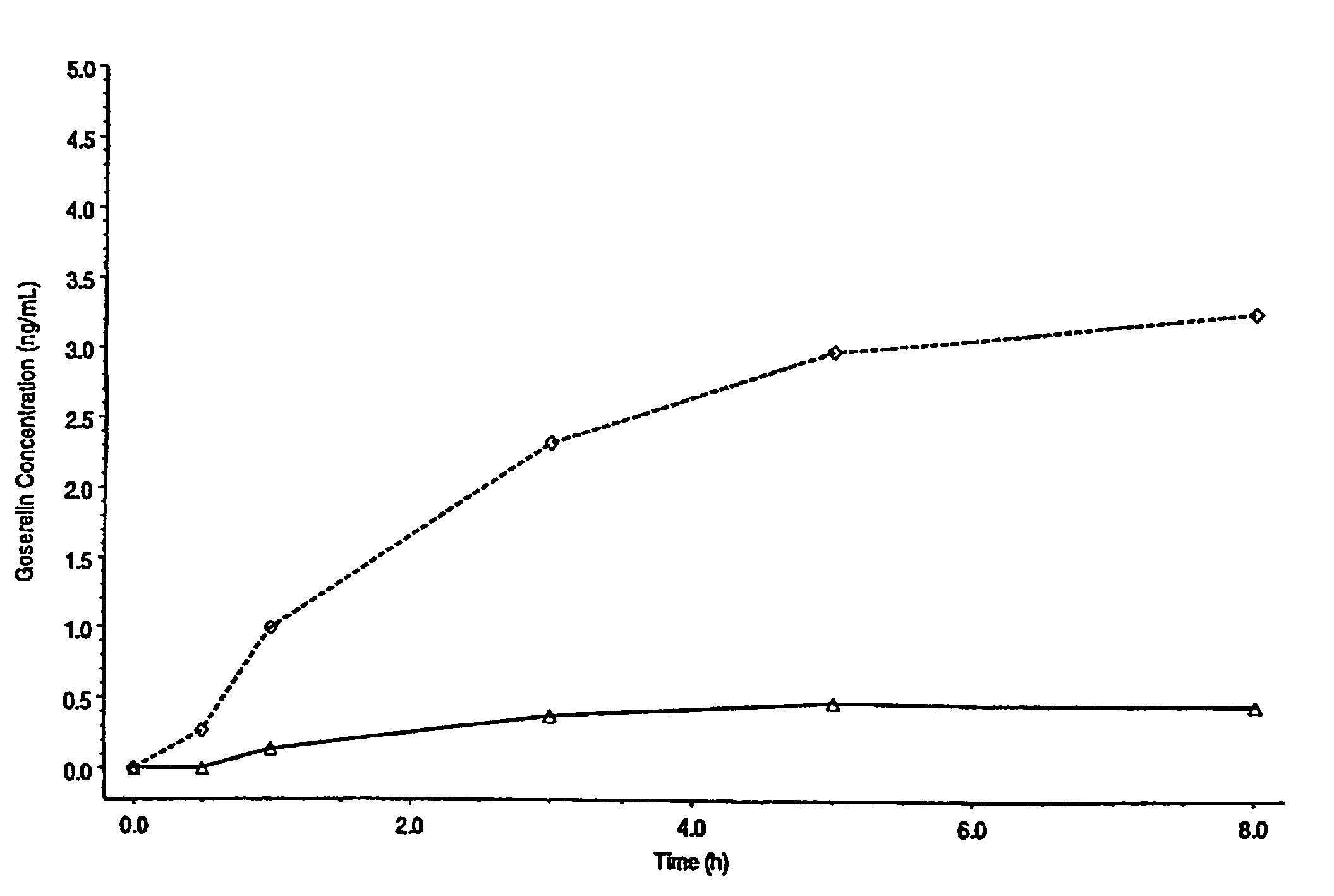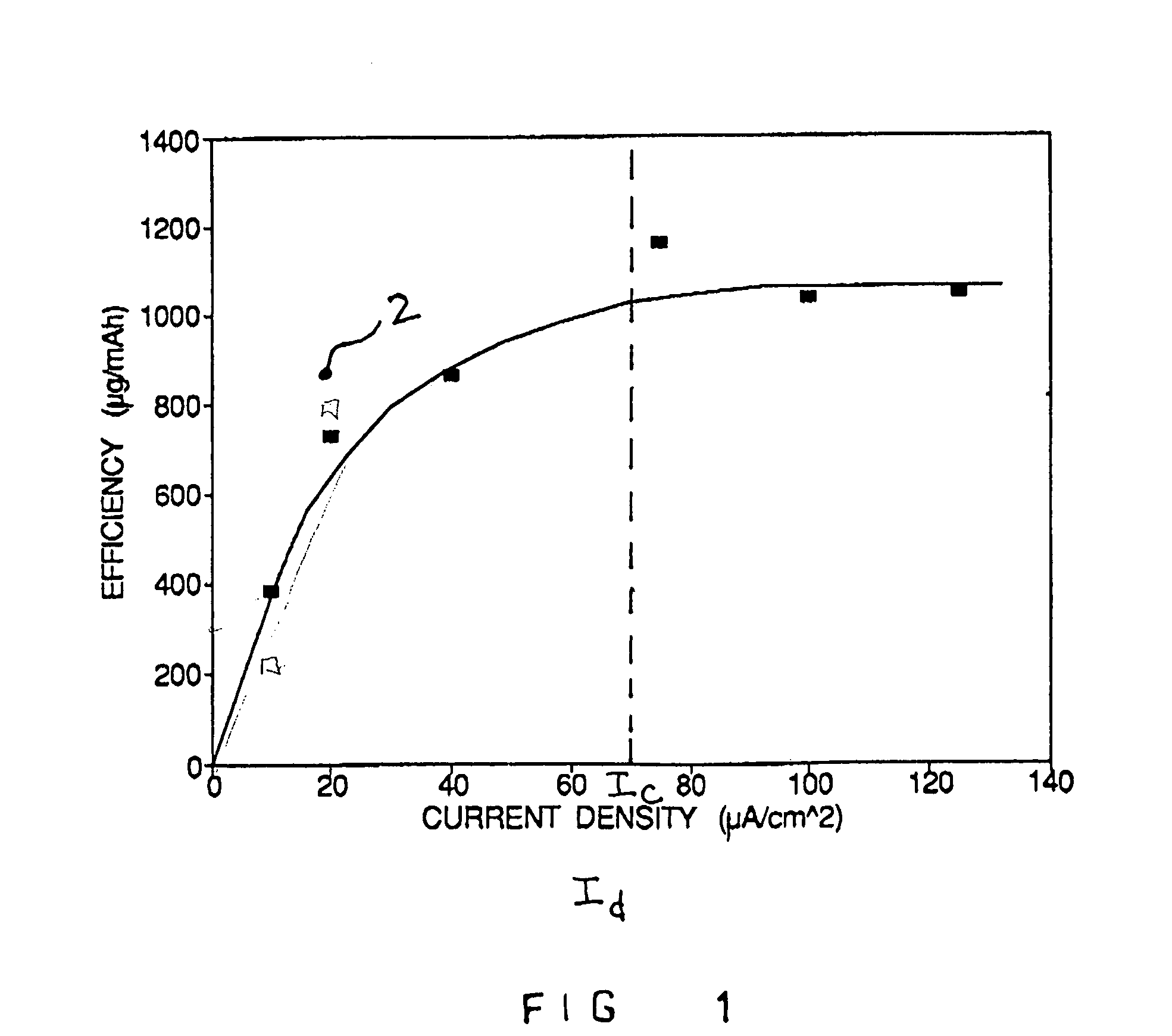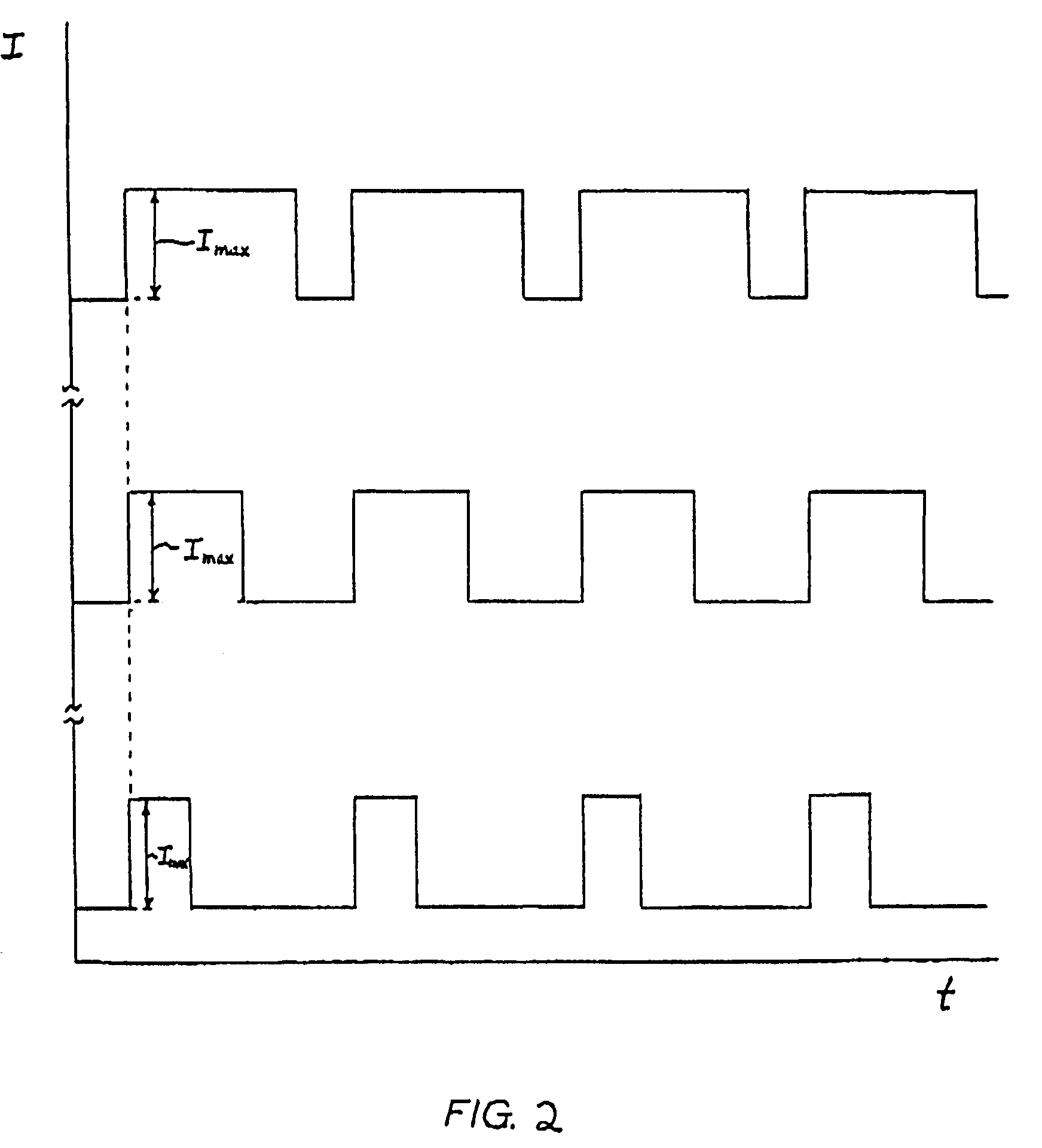Electrotransport agent delivery method and apparatus
a technology of electrotransport agent and electrode, which is applied in the direction of other medical devices, organic active ingredients, therapy, etc., can solve the problem that the drug cation cannot compete with the electrotransport agent for the delivery into the body, and achieve the effects of improving the electrotransport efficiency of the skin, high efficiency and high efficiency
- Summary
- Abstract
- Description
- Claims
- Application Information
AI Technical Summary
Benefits of technology
Problems solved by technology
Method used
Image
Examples
example 1
Current Density and Increased Efficiency
[0063]This study evaluated the effect of applied current on electrotransport drug delivery efficiency. Drug delivery efficiency is expressed in terms of the rate of drug delivery per unit of applied current. The study involved the application of electrotransport devices to eighteen healthy male volunteers for a duration of about one day.
[0064]The two electrotransport treatments involved the delivery of fentanyl at a baseline current of 100 μA across a 5 cm2 drug-releasing area (i.e., an applied electrotransport current density of 20 μA / cm2). Six of the eighteen volunteers were administered 4 bolus doses during the first hour of treatment by applying current levels of 1300 μA (i.e., an applied electrotransport current density of 260 μA / cm2) for a duration of 2.5 minutes at 15 minute intervals. Following the administration of the four boluses in the first hour of treatment, these six volunteers received continuous transdermal electrotransport fe...
example 2
Current Density and Fentanyl Flux
[0069]This study was undertaken to evaluate the relationship of current density and drug flux in the transdermal electrotransport delivery of fentanyl. Electrotransport devices, delivering constant DC currents, were applied to 8 healthy male volunteers for a duration of 24 hours. The three electrotransport treatment regimens in this study differed only in the applied electrotransport current (and therefor current density) levels. The electrotransport devices delivered fentanyl through the skin from a donor hydrogel having a skin contact surface area of 5 cm2. The gels were imbibed with an aqueous solution of fentanyl HCl. The current density levels used in this study were 10, 20, and 40 μA / cm2. After a 24 hour treatment period, the electrotransport devices were removed. The skin site was then washed to remove any residual fentanyl. All 8 volunteers received each treatment approximately 1 week apart.
[0070]For each treatment, blood samples were taken o...
example 3
Pulsing Frequency and Fentanyl Flux
[0072]This study assessed the effect of pulsing frequency on the electrotransport delivery of fentanyl using pulsed current waveforms. The frequencies evaluated in this study were 1, 10, and 625 Hz.
[0073]The electrotransport devices were configured to deliver a 200 μA square wave current pulse, having a 31% duty cycle. The electrotransport devices delivered fentanyl through the skin from a donor hydrogel having a skin contact surface area of 2 cm2. The gels were imbibed with an aqueous solution of fentanyl HCl. After treatment periods of varying duration, the electrotransport devices were removed. The skin site was then washed to remove any residual fentanyl.
[0074]For each treatment, blood samples were taken commencing with the application of current from the electrotransport devices. Serum fentanyl levels from each patient were used to calculate mean drug flux.
[0075]FIG. 7 shows that the use of a square-wave frequency of 625 Hz resulted in minimal...
PUM
| Property | Measurement | Unit |
|---|---|---|
| current density | aaaaa | aaaaa |
| current density | aaaaa | aaaaa |
| current density | aaaaa | aaaaa |
Abstract
Description
Claims
Application Information
 Login to View More
Login to View More - R&D
- Intellectual Property
- Life Sciences
- Materials
- Tech Scout
- Unparalleled Data Quality
- Higher Quality Content
- 60% Fewer Hallucinations
Browse by: Latest US Patents, China's latest patents, Technical Efficacy Thesaurus, Application Domain, Technology Topic, Popular Technical Reports.
© 2025 PatSnap. All rights reserved.Legal|Privacy policy|Modern Slavery Act Transparency Statement|Sitemap|About US| Contact US: help@patsnap.com



